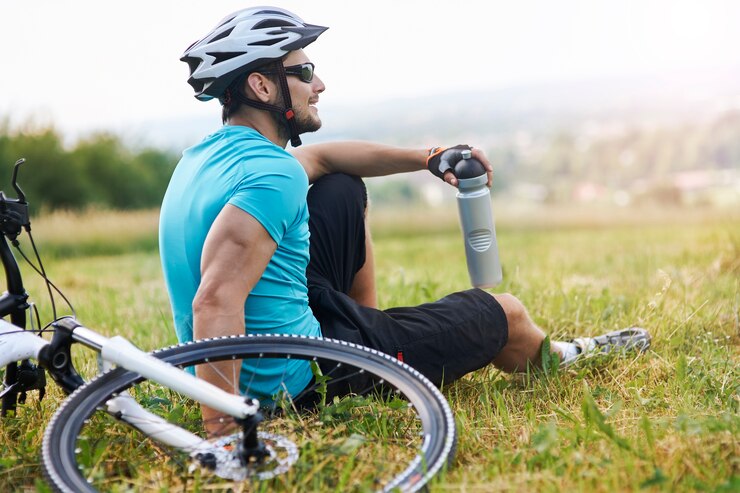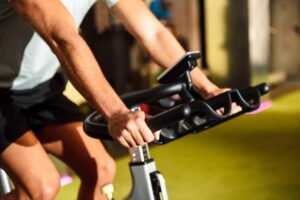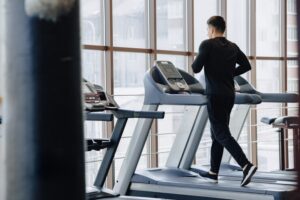Recover Smarter. Ride Stronger.
Recovery is just as important as training when it comes to cycling performance. Whether you’re grinding through hill climbs, pushing your limits on endurance rides, or hitting interval sessions, proper recovery helps your muscles repair, rebuild, and come back stronger. In this guide, iBike shares essential cycling recovery tips that every rider—new or experienced—should know.
1. Don’t Skip the Cool-Down
As tempting as it is to hop off the bike after a tough ride, taking a few minutes to cool down helps your heart rate return to normal and flushes out lactic acid.
iBike recommends:
-
5–10 minutes of easy pedaling at a low intensity
-
Light stretching immediately after to reduce tightness
This small habit can prevent muscle stiffness and improve long-term recovery.
2. Rehydrate and Refuel Immediately
Riding depletes your body of fluids and energy stores, especially on long or high-intensity rides. To recover quickly:
-
Drink plenty of water or an electrolyte drink
-
Eat a post-ride meal with a good mix of carbs and protein (ideally within 30 minutes)
Examples: smoothie with protein powder, chicken and rice, or a banana with peanut butter
iBike nutrition tip: Carbohydrates replenish your energy, while protein helps rebuild muscle tissue.
3. Incorporate Active Recovery Days
You don’t need to stop moving on your rest days. Light activity can actually speed up the recovery process by improving blood flow and reducing soreness.
Try:
-
A relaxed 30-minute ride
-
Easy yoga or stretching
-
A short walk or swim
Active recovery keeps you mobile without placing stress on tired muscles. iBike encourages at least one active recovery day after intense rides.
4. Prioritize Quality Sleep
Sleep is where most of your muscle repair happens. For cyclists, getting 7–9 hours of quality sleep per night can dramatically improve recovery and performance.
Quick iBike sleep tips:
-
Keep your room cool and dark
-
Avoid screens at least 30 minutes before bed
-
Stick to a consistent sleep schedule
Better sleep = stronger rides.
5. Use Recovery Tools Wisely
Recovery gadgets and tools can help reduce inflammation and speed up healing. Popular options include:
-
Foam rollers – For deep tissue massage and loosening tight muscles
-
Massage guns – Targeted relief for sore spots
-
Compression gear – Improves circulation post-ride
iBike-tested tip: Focus on your quads, hamstrings, calves, and glutes—these muscle groups do most of the work during cycling.
6. Listen to Your Body
One of the most overlooked recovery strategies is simply paying attention. If you’re feeling unusually fatigued, experiencing lingering soreness, or losing motivation, your body might be asking for rest.
Signs you may need a recovery day:
-
Your legs feel heavy during a ride
-
You’re not hitting your usual performance levels
-
You’re irritable or mentally drained
iBike advises adjusting your training plan if you feel overtrained—rest is productive, not a setback.
7. Stick to a Recovery Routine
Building a recovery routine ensures that your body gets the support it needs consistently. Here’s a sample iBike Recovery Checklist for post-ride care:
✔️ Cool down and stretch
✔️ Rehydrate and eat
✔️ Light activity or foam rolling later in the day
✔️ Get 7–9 hours of sleep
✔️ Take rest days as needed
Final Thoughts
Cycling recovery isn’t just about resting—it’s an active part of becoming a stronger, faster, and healthier rider. By incorporating these tips from iBike into your routine, you’ll reduce your risk of injury, boost your performance, and enjoy the ride even more.
Stay tuned to iBike for more expert cycling advice, gear reviews, and training strategies. Your next best ride starts with better recovery! 🚴♂️💪




